Team organizational structure

There are several types of organizational structure within the category of a hierarchy chart. The most common types of organizational hierarchy are:
- Functional,
- Flat,
- Division, and
- Team.
This article focuses on the team organization structure. All charts are produced with Lexchart.
Team organizational structure defined
A team organizational structure is a variation of the divisional structure. The team as an organizational unit does not have P&L responsibilities and does not include corporate functions, unless those functions are an essential element of the team.
A multi-line product company might create a team organizational structure around each product.
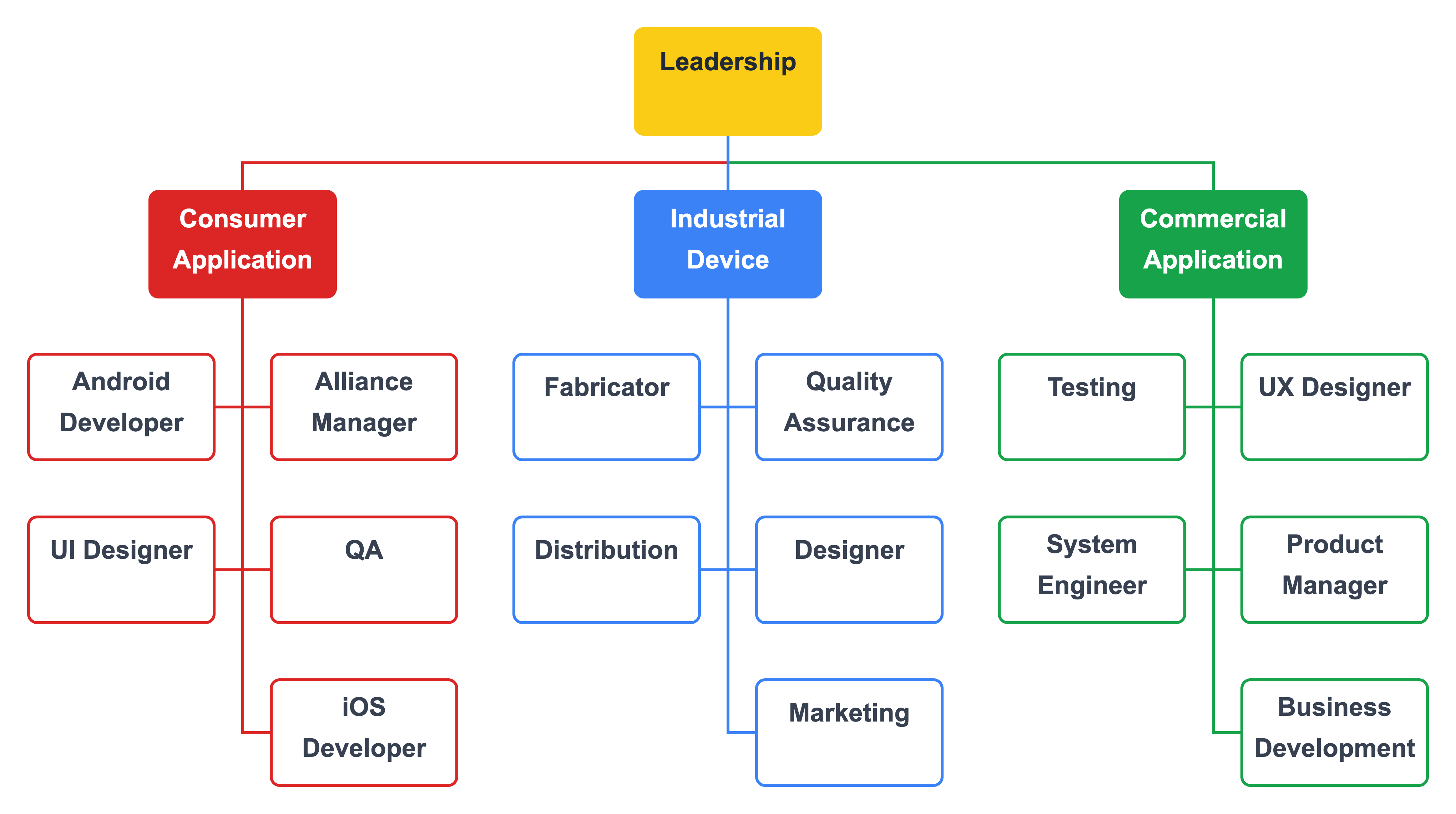
Notice these teams are cross-functional; they include people from multiple disciplines.
Team org chart diagram
There are three critical questions to answer before designing a team org chart.
- How much organizational context is necessary?
- Is the role more important than the team member for purposes of the chart?
- Do team members report to managers outside the team?
Team organizational context
A team org chart can focus on the team and its members to the exclusion of the rest of the organization.

If, however, the chart needs to show a new team in the context of other teams, then the chart should show enough of the hierarchy to capture the other teams.
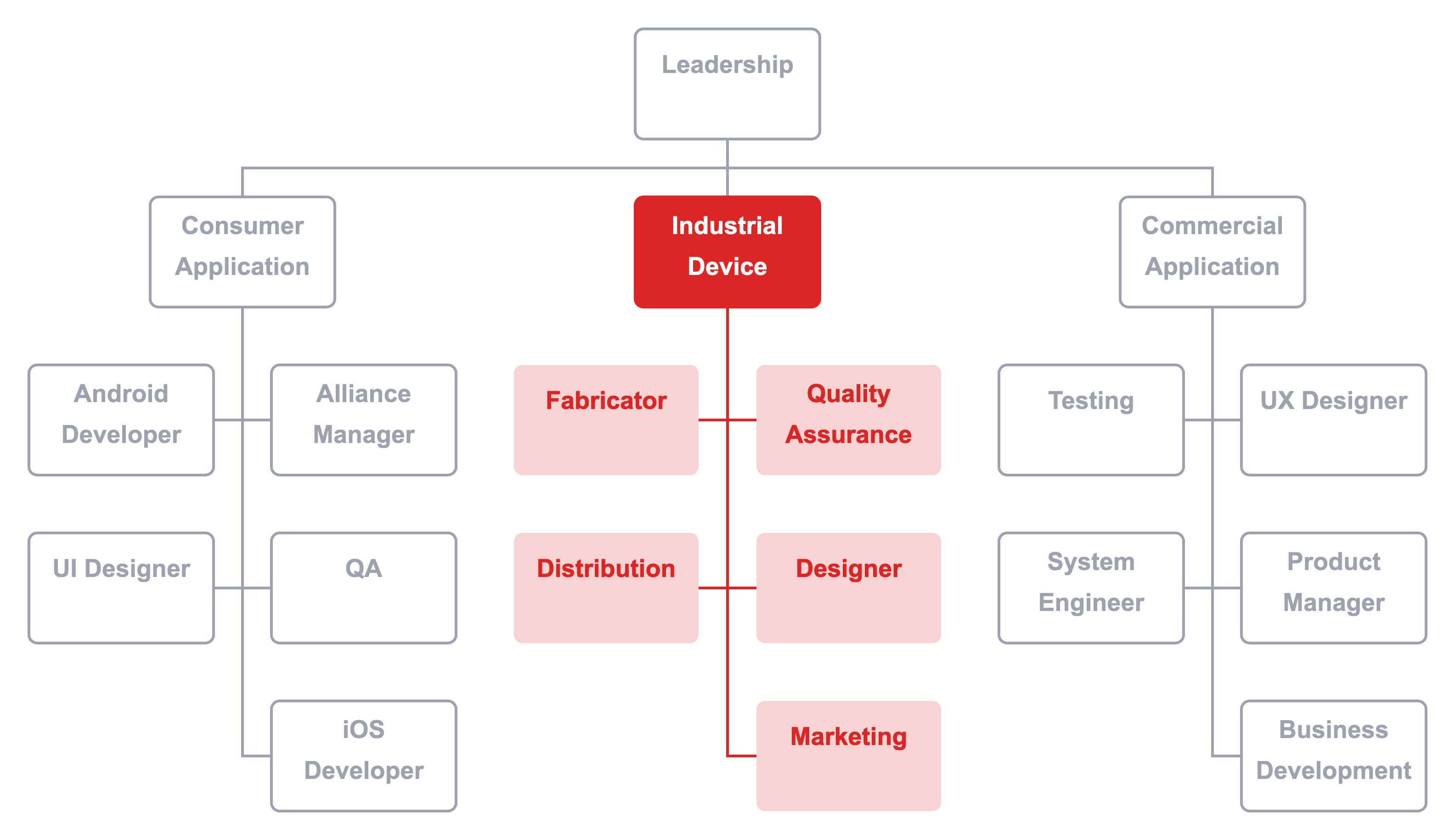
How much context to provide depends on the use and audience of the team diagram.
Team roles and team members in org charts
Unless the org chart is conceptual, it will include both team member names and roles. What should headline each card, name or role?
If the primary purpose of the team chart is to show management reporting responsibilities, then lead with the name. Management reporting responsibilities include the authority to assign work and influence compensation of team members.
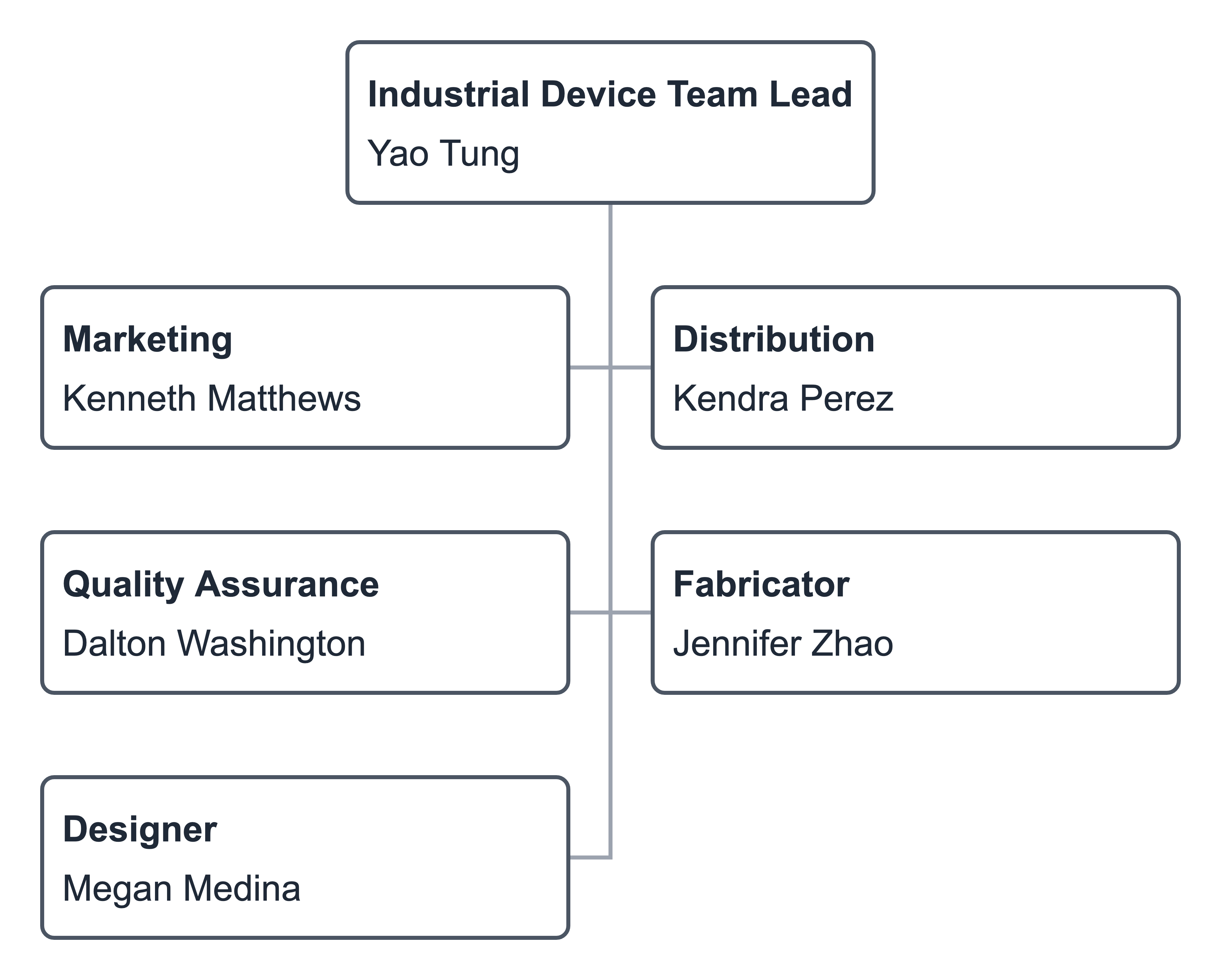
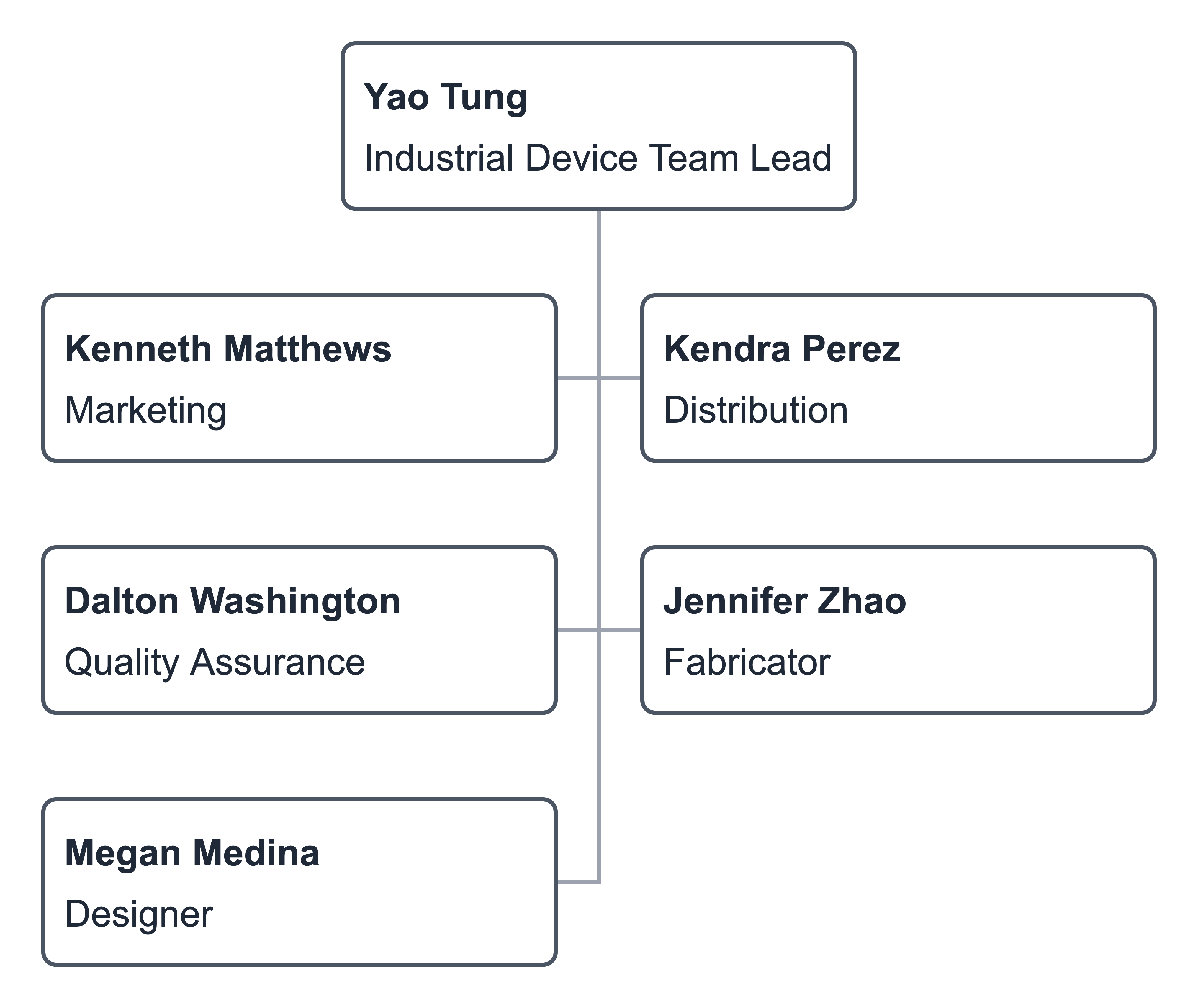
If, however, the primary purpose is to show the functional makeup of the team, then lead with the role in each card.
Team members with multiple reporting relationships (the dotted line)
Team structures are created for a defined period or scope of work. In those cases, each team member might report to a manager outside the team. The org chart should show those dual reporting relationships.
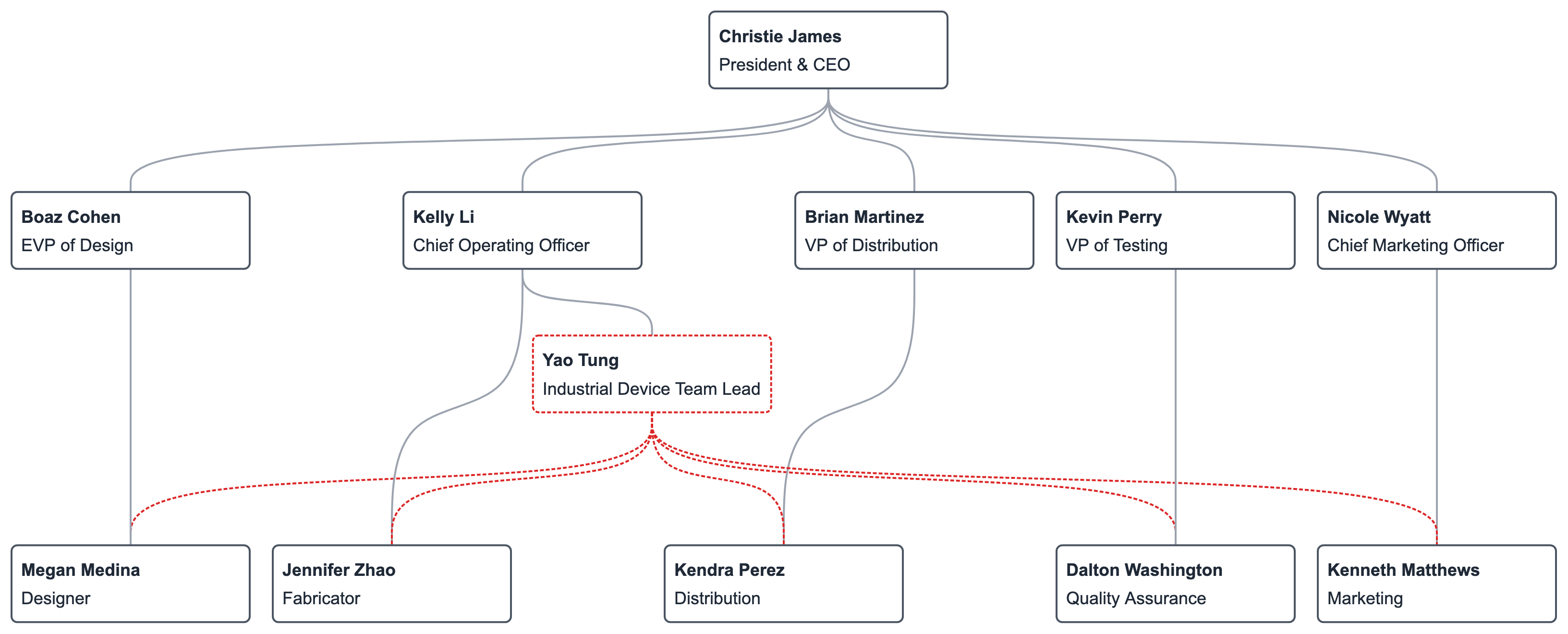
This chart achieves several objectives in one elegant diagram. First, the team organization is placed in organizational context, not relative to other teams, but relative to reporting relationships.
Second, the team is a nested hierarchy. Notice how Lexchart automatically places the team lead at an intermediate level. The team members report to the team lead placing them lower on the hierarchy. They are peers of the team lead in reporting relationships which is clear, because the solid lines pass directly through the intermediate level. This is called "generation skipping".
Third, the chart is complicated with 12 people and 16 connections. Using curved lines instead of elbow connectors makes the connections clear. No relationship is lost due to overlapping lines.
Matrix organizational structure
A matrix organizational structure attempts to combine a functional structure with a team structure. Staff have direct reporting relationships to functional managers. Staff then have a second reporting relationship to a project manager that crosses functional silos.

This image of a matrix structure alternates between elbow and curved connectors to distinguish the dual reporting lines for each staff member.
There are three variations of a matrix organizational structure:
- Weak matrix structure,
- Balanced matrix structure, and
- Strong matrix structure.
Each variation attempts to resolve the tension created by having two managers. Who has responsibility over the project?
Weak matrix structure
In a weak matrix structure, decision making over the project rests with the functional manager. The problem is that each functional manager can then work at cross purposes to the project.
Balanced matrix structure
The theory behind a balanced matrix structure is that the functional and project managers have an equal say in the project.
Strong matrix structure
A strong matrix structure assigns primary responsibility and authority over the project to the project manager. For a strong matrix structure org chart, you might make the lines between the project manager and team members solid; the lines between the functional managers and team members dotted.
Conclusion
To create a team hierarchy diagram, focus on each pair of connections: team lead and team member. Let the advanced algorithms of Lexchart hand the layout of the team org chart automatically. Get started with our team org chart template.
If you need to know how to create an org chart or present an org chart, check out the Complete Guide to Organization Charts.

